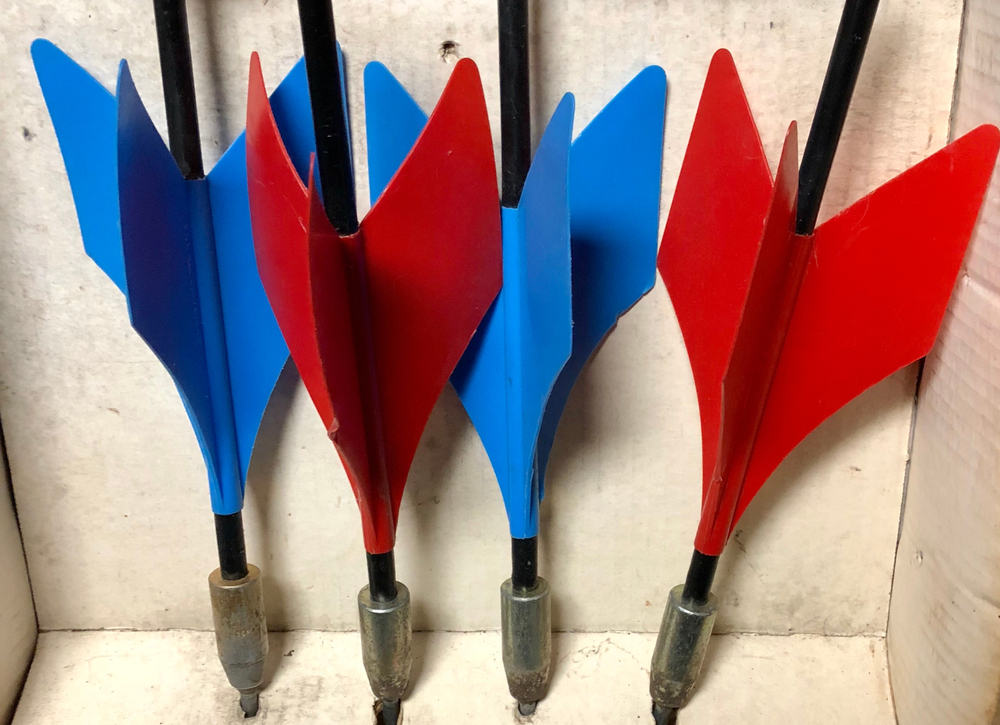Many popular toys from the past were staples in homes across the world. At the time, safety regulations were minimal, and cultural norms were very different. Toys were judged by entertainment value, not by risk. Over time, concerns about toxicity, physical injury, and social influence changed the way toys are manufactured and marketed. Today, strict testing and labeling requirements prevent many of these once-popular toys from being sold. This list explores 33 examples that would never get approval if introduced in stores now.
Lawn Darts
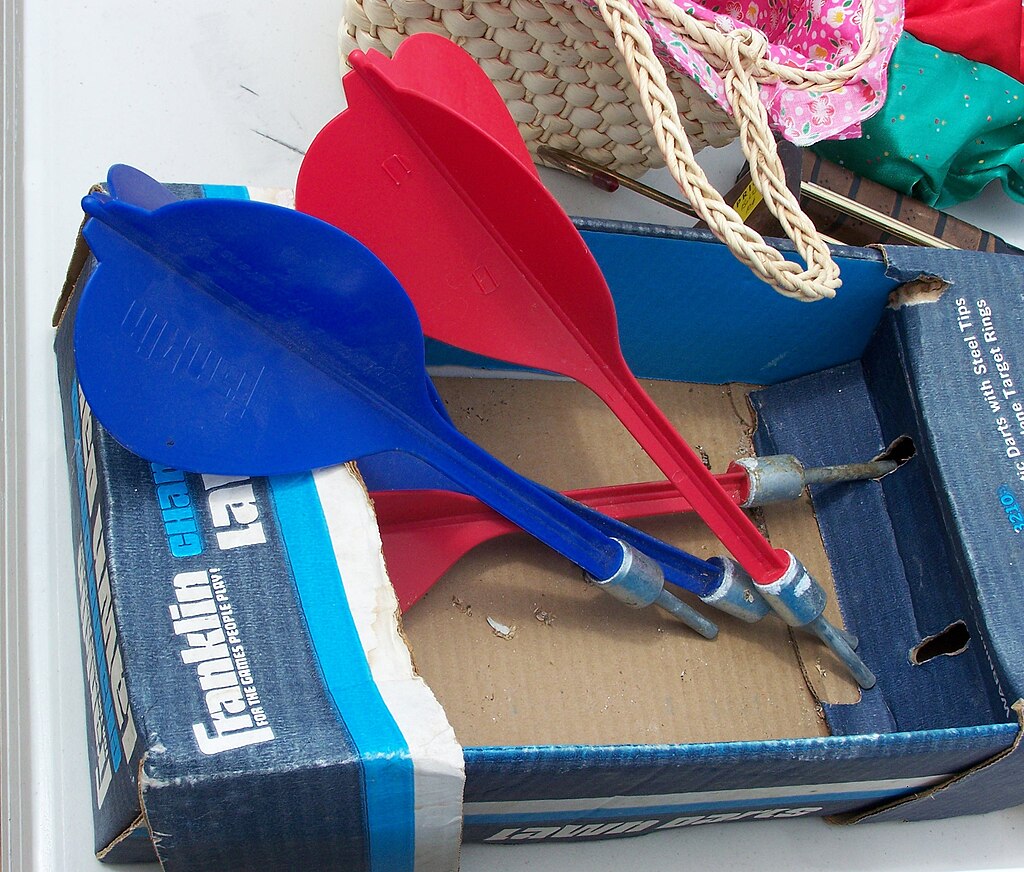
Lawn darts were oversized darts made of metal with sharp pointed tips, intended to land inside plastic rings set on the grass. While they were meant for outdoor fun, they often missed their targets and injured players instead. Children were especially vulnerable because the darts were heavy and could penetrate skin or bone on impact. Reports of skull punctures and even fatalities led to widespread concern. These darts were eventually banned from retail shelves and replaced with safer alternatives made from lightweight foam. Their removal marked a shift toward prioritizing safety over tradition in backyard games.
Creepy Crawlers Original Oven
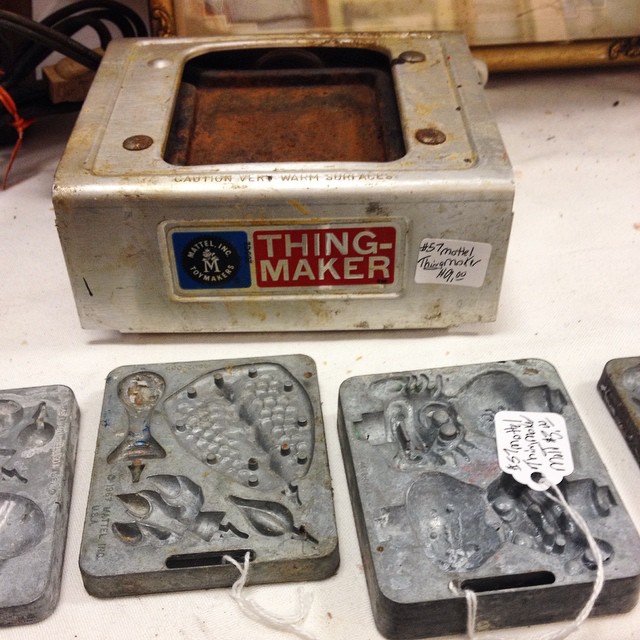
The original Creepy Crawlers toy included an electric oven used to heat a chemical substance called Plasti-Goop into rubber insects and creatures. While the idea seemed imaginative, it posed a high risk of burns. The metal molds and heating tray could reach extreme temperatures, making it unsafe for young users. In addition, fumes from the melting material were unpleasant and potentially harmful when inhaled. Many children suffered finger burns or respiratory issues while using the toy. Updated versions now feature enclosed designs and safer heating mechanisms, but the original model is often cited as a cautionary example.
Clackers
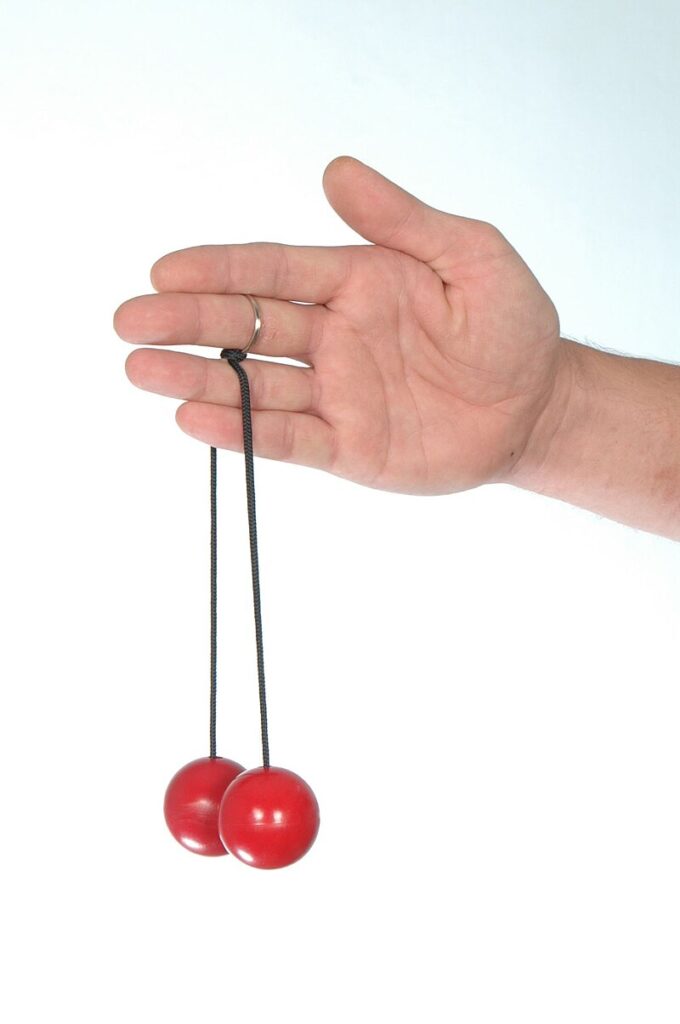
Clackers were made of two acrylic balls connected by a sturdy string, and users would swing them so the balls clicked together above and below their hands. When done right, it produced a rhythmic sound and a hypnotic motion. But the balls were made of hard plastic that often cracked or shattered from repeated force. When they broke, sharp fragments could fly into users’ faces or eyes. Hospital visits were common, and multiple reports of eye injuries and cuts pushed regulators to act. Today’s toy standards would not allow such high-velocity shattering materials near children.
CSI Fingerprint Lab
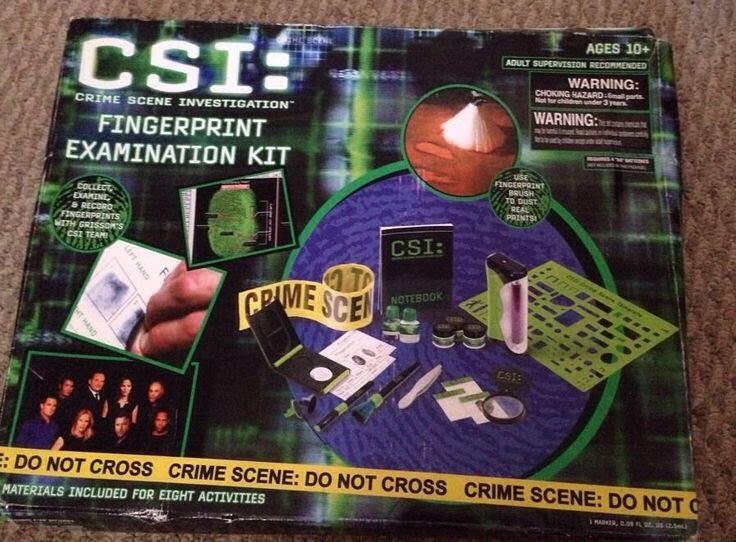
Inspired by crime television, this lab kit allowed children to dust for fingerprints and analyze evidence. The problem was that some of the kits included powder made from talc contaminated with asbestos. Asbestos is dangerous when inhaled and can lead to long-term health conditions. Though the toy was intended to educate and inspire curiosity in forensic science, it posed a very real health risk. Once this contamination came to light, the kits were pulled from the market. Toy companies now face strict requirements for chemical ingredients, especially in science-themed kits.
Sky Dancers

Sky Dancers were fairy-themed dolls that launched into the air using a plastic pull-string base. They were colorful and appealing to children, but their flight path was unpredictable. The spinning wings could strike children in the face, eyes, or head. Injuries included eye lacerations, concussions, and broken teeth. Dozens of cases were reported before the toy was recalled. Although updated versions with softer materials exist, the original design would not meet modern standards. This toy remains one of the most commonly cited examples of popular toys with unintended consequences.
Snacktime Cabbage Patch Kids

These dolls had mechanical mouths that “ate” plastic snacks, creating a more interactive play experience. However, the dolls did not have sensors or off switches. If a child’s finger or strand of hair got caught in the mouth, it would continue to chew, causing pain and panic. Several reports involved children getting their hair stuck and having to cut it to release the doll’s grip. Due to the risk and lack of an emergency stop feature, the product was quickly discontinued. Safety switches are now a basic requirement for all battery-powered interactive toys.
Aqua Dots
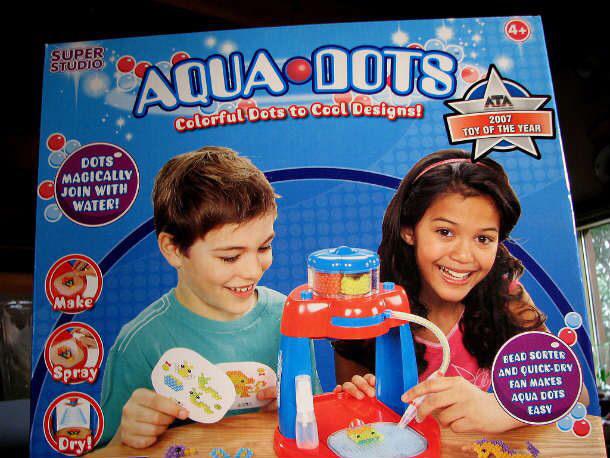
Aqua Dots were colorful craft beads that stuck together when sprayed with water. They were marketed as non-toxic and safe for kids to use unsupervised. However, some batches of beads were found to contain a chemical that turned into a toxic substance when ingested. Several children fell seriously ill after swallowing the beads, prompting an urgent international recall. The incident underscored the need for tighter control over imported manufacturing processes. Modern craft kits are now tested for toxicity and clearly labeled for age appropriateness.
Gilbert U-238 Atomic Energy Lab
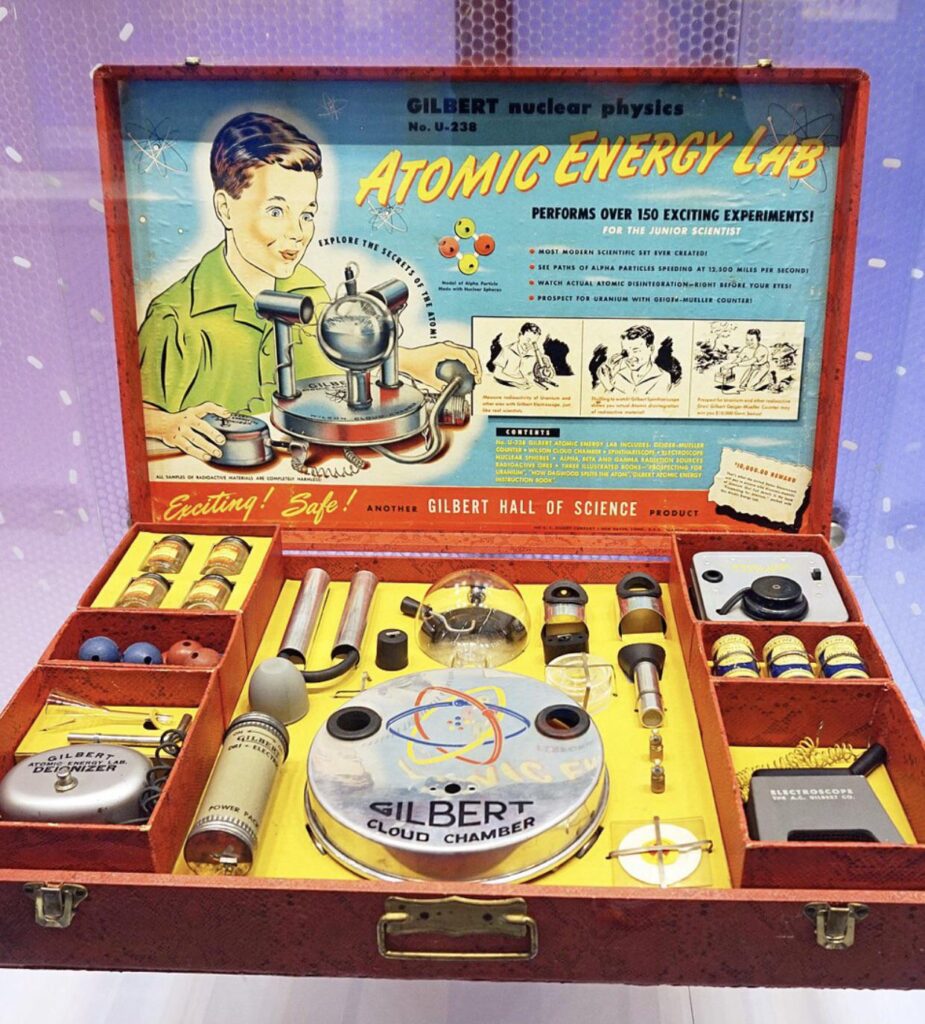
Marketed in the 1950s, this kit included real uranium ore samples to help children learn about atomic energy. It also came with a Geiger counter, cloud chamber, and instruction manual. Although the intent was educational, the inclusion of radioactive materials presented clear risks. Handling the samples could lead to radiation exposure, and the long-term health implications were not understood at the time. The toy was soon discontinued due to poor sales and public concern. No toy sold today would be allowed to include radioactive material, regardless of its scientific purpose.
Battlestar Galactica Missile Toys

Toys tied to the Battlestar Galactica series included spaceships with small, spring-loaded missiles. The missiles could be launched by pressing a button, but their small size and high velocity created a choking risk. A highly publicized case involved a child who inhaled one of the projectiles and died. Following this tragedy, toy manufacturers were required to design projectiles too large to be swallowed and to label choking hazards clearly. These events led to sweeping changes in toy safety regulations across all action figures and projectile-based playsets.
Fisher-Price Puffalumps
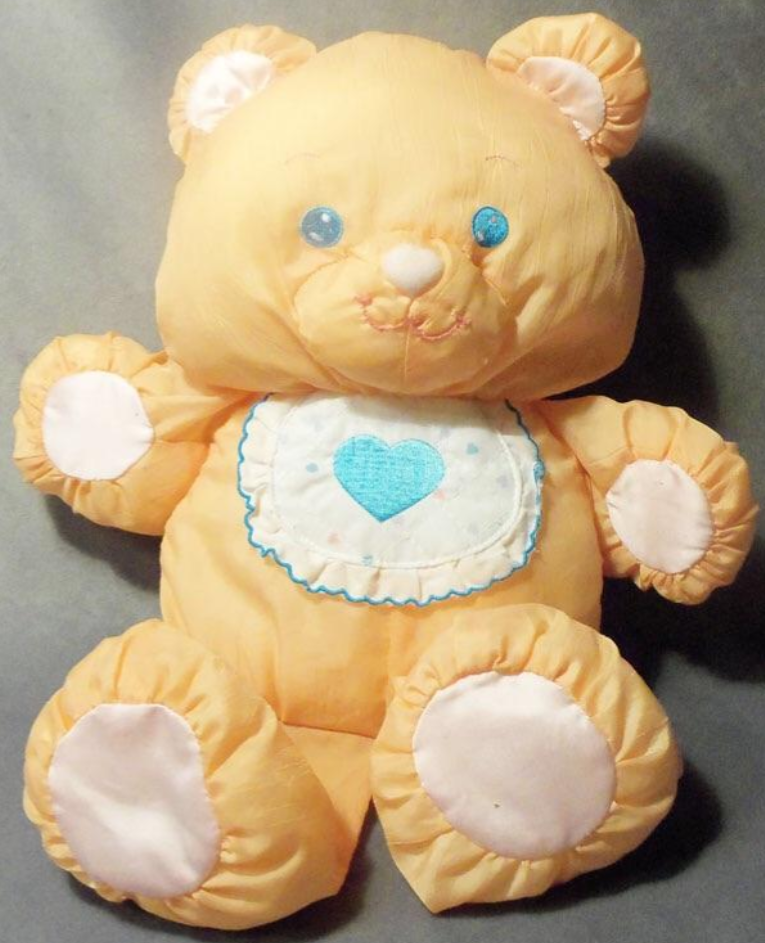
These plush toys were soft and lightweight, making them ideal for toddlers. However, they were made from highly flammable material that could ignite easily if placed near a heat source. At the time, regulations for flame retardancy in toys were minimal. Fire hazards became a serious concern, especially for sleep environments like cribs and playpens. Today’s stuffed animals are required to meet strict flammability standards, and Puffalumps were discontinued due to safety risks.
Toy Guns with Realistic Design

In the past, toy guns were designed to look just like real firearms. They were made from metal or matte plastic and lacked any identifying features that marked them as toys. This caused confusion in public places and sometimes led to fatal encounters with law enforcement. Modern toy guns must be brightly colored or made with translucent plastic. Federal guidelines now mandate orange tips and non-functioning firing mechanisms. Realistic replicas are no longer sold in toy stores.
Easy-Bake Ovens with Exposed Coils

The original Easy-Bake Oven used a high-wattage incandescent bulb or metal coil to bake miniature treats. The baking chamber was open enough for fingers to slip inside during use. Children frequently burned their fingers or got them stuck. Later versions were redesigned with enclosed heating elements and additional safety guards. Newer models now include digital temperature controls and external casing that remains cool to the touch.
Water Wiggle Sprinklers
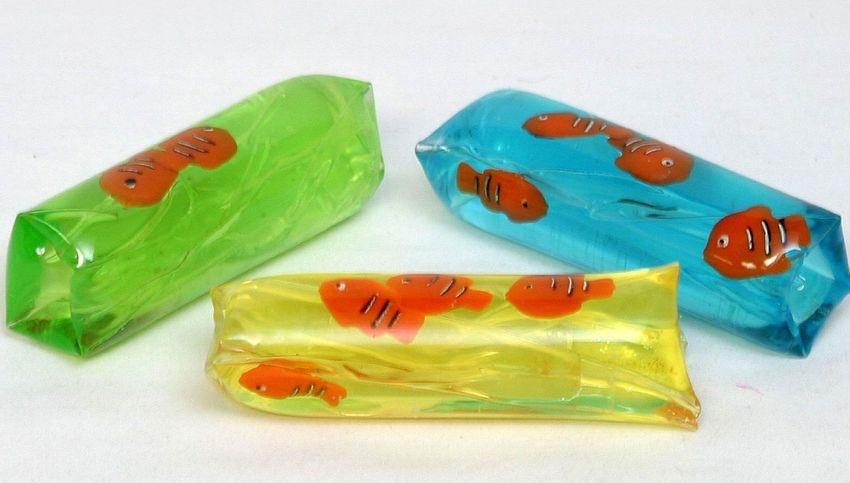
Water Wiggle was a sprinkler toy connected to a garden hose. When turned on, it flailed unpredictably due to the water pressure. While entertaining, it was not safe for children under three. In one tragic incident, a child suffocated when the toy’s nozzle came off and lodged in their throat. The toy was immediately recalled. Current sprinkler toys must pass performance testing to ensure they do not pose a strangulation or choking hazard.
Toy Chemistry Sets with Open Chemicals
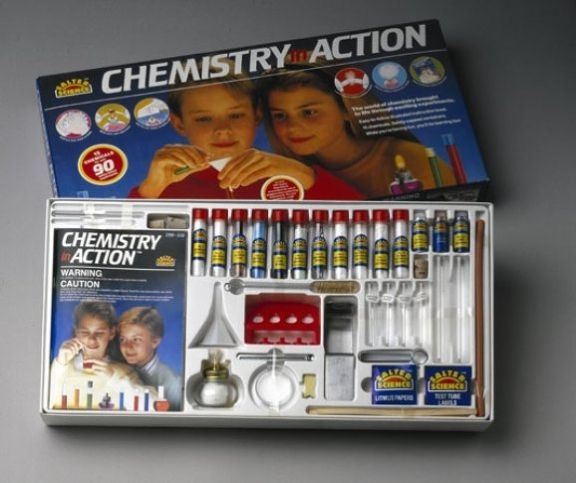
Earlier versions of toy chemistry sets contained substances like potassium permanganate, ammonium nitrate, and even small amounts of sulfur. These were meant to introduce kids to science, but the chemicals could cause burns or explosions if mixed improperly. Many sets lacked protective gloves or eye gear. Accidents included chemical burns, eye injuries, and small fires. Today’s sets use only safe, pre-measured components and include protective equipment in every box.
Barbie’s Slumber Party Book
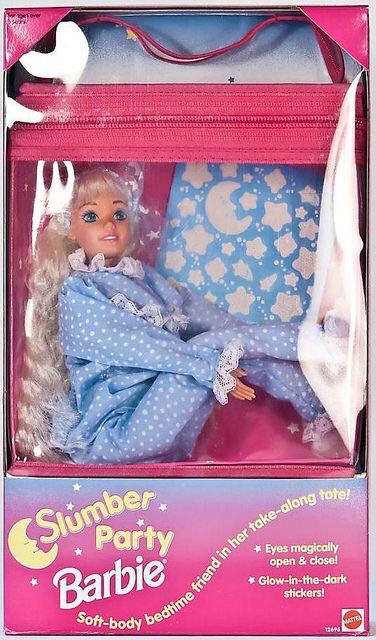
This small booklet was included with some Barbie dolls and featured beauty and diet tips. One suggestion was to eat cotton balls soaked in lemon juice as a way to lose weight. This incredibly dangerous advice promoted unhealthy eating behaviors in young girls. Public backlash was swift, and the book was removed from production. Toys that promote body image ideals are now carefully monitored, and educational materials must follow health guidelines.
Toy Makeup Kits with Lead

Toy makeup kits once used bright pigments that sometimes contained heavy metals like lead, cadmium, and arsenic. At the time, regulations for cosmetic safety in children’s products were loosely enforced. Kids would apply these powders and lipsticks to their faces, risking exposure to harmful chemicals. Ingesting or absorbing lead through the skin could cause long-term neurological damage. After lead was found in several popular toys, regulations were introduced requiring full ingredient transparency and pre-market testing. Children’s makeup today must meet the same safety standards as adult cosmetics.
Slap Bracelets with Exposed Edges
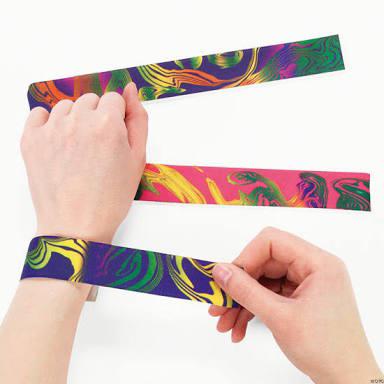
Slap bracelets were wildly popular in the 1990s and consisted of flexible metal bands wrapped in fabric. Kids would slap them onto their wrists, causing the band to curl around the arm. While fun, repeated use wore down the fabric, exposing the sharp metal inside. Injuries included cuts, bruises, and even punctures. Schools eventually banned them, and retailers pulled the most dangerous versions. Safer designs with fully enclosed bands and reinforced padding were introduced, but the original slap bracelets would never meet today’s safety requirements.
Jarts Knockoffs
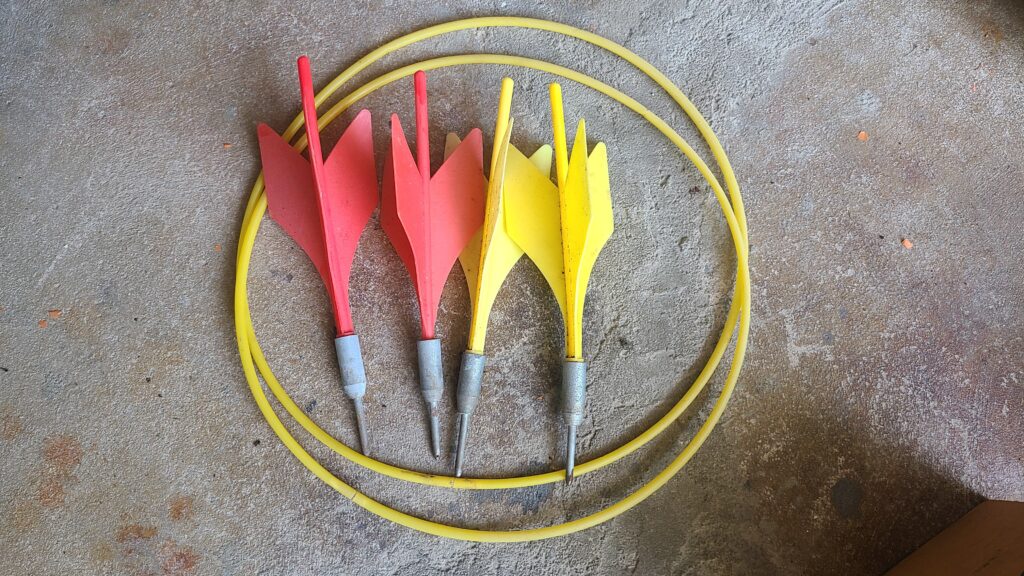
After the official ban of lawn darts, knockoff brands tried to fill the gap using modified names and cheaper materials. Some kept the heavy, pointed tips that made the original so dangerous. These imitators were sold at dollar stores, flea markets, and unregulated online platforms. Despite minor changes in design, they posed the same risks as their banned predecessors. Injuries persisted until new laws targeted not just the original brand but any similar weighted projectile toy. Outdoor games for kids now require foam construction and age-specific labeling to avoid such hazards.
Kinder Surprise Eggs (In the US)

Kinder Surprise Eggs are chocolate eggs with a plastic capsule containing a toy inside. While these are legal and popular in many countries, they are banned in the United States. U.S. laws prohibit embedding non-edible objects inside edible food due to the choking hazard. Children may bite into the egg without knowing a hard object is inside. Instead, U.S. versions like Kinder Joy separate the toy from the candy in individual compartments. The strict regulation highlights the country’s focus on eliminating food-related choking hazards, even in small novelty items.
Bicycles Without Chain Guards
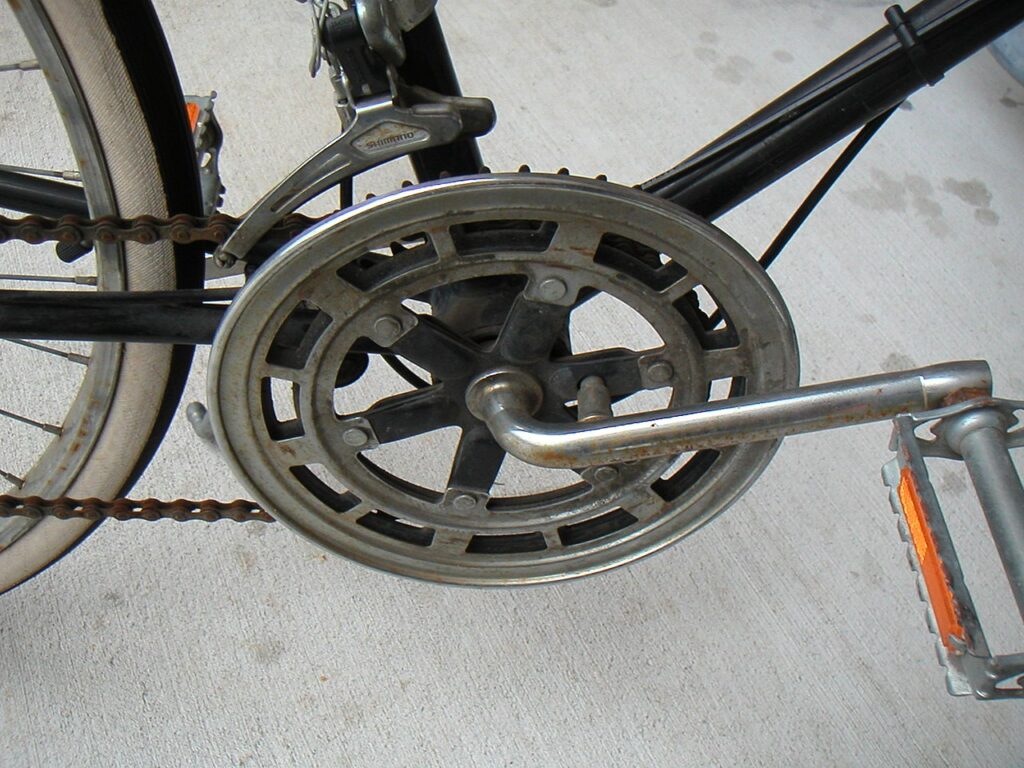
Many early children’s bicycles were sold without protective chain guards. This exposed the metal chain, gears, and sprockets to clothing, fingers, and shoelaces. During rides, it was common for pants to get caught or for hands to be cut during repairs. The lack of shielding also increased the risk of injury during falls. Chain guards are now a standard feature on youth bicycles and are often made of durable plastic or metal to prevent contact with moving parts. Safety laws also require stability testing and crash resistance for all bikes marketed to minors.
Playsets with Lead Paint

Wooden and metal playsets, especially those produced before the 1980s, often featured bright, glossy paint that contained lead. As the paint aged, it chipped and flaked, creating dust and debris that could be inhaled or ingested. This was especially dangerous for toddlers who put toys in their mouths. Lead exposure can damage the brain and nervous system, particularly in young children. Modern toy paint must be lead-free and certified under international safety standards. Antique toy collectors are now advised to avoid giving vintage painted toys to children.
Magnetic Building Toys
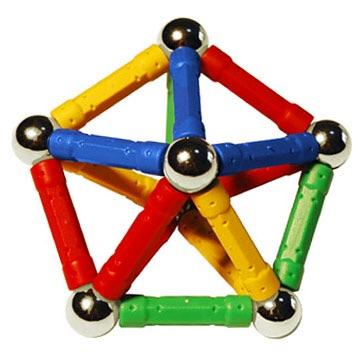
Some building kits featured small, powerful magnets that could detach from toy pieces. If more than one magnet was swallowed, they could attract each other through the intestines and cause blockages, tears, or internal bleeding. Dozens of injuries were reported before regulations were updated. Today, magnets in toys must be embedded so they cannot come loose during normal use. Additionally, toys with small magnetic parts must include warning labels and age restrictions to prevent use by toddlers and young children.
Toy Cigarette Candy
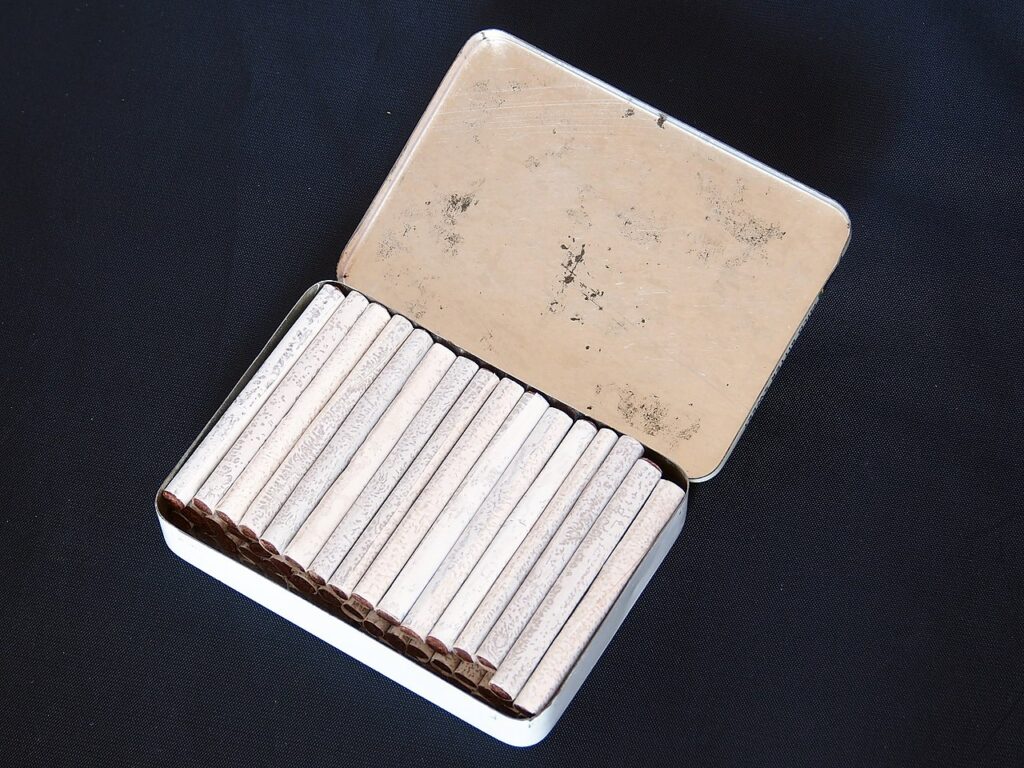
Candy cigarettes were once a common treat for kids, mimicking adult smoking with sugar or gum sticks that produced white dust when puffed. Some were packaged in boxes nearly identical to real cigarette packs. Although marketed as innocent fun, these popular toys encouraged smoking behavior at a young age and normalized tobacco use. As awareness of smoking’s health effects increased, public sentiment turned against the candy. Many countries have banned them outright, while others now regulate packaging and marketing to avoid glamorizing adult habits.
Dangerous Yo-Yos
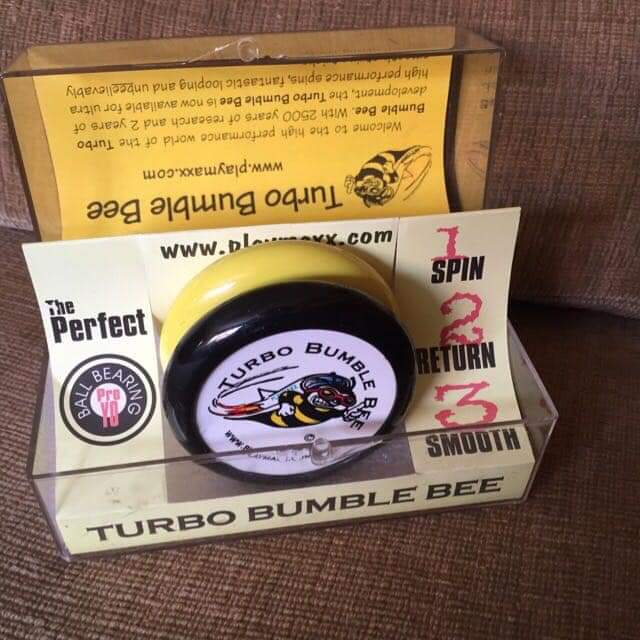
Some yo-yos used stretchable cords made from elastic or rubber that could snap back at high speed. Other versions had excessive weight, turning them into dangerous projectiles when spun incorrectly. Children suffered eye injuries, facial bruises, and broken glasses. Some cords even posed a strangulation risk when wrapped around the neck. Modern yo-yos use non-stretch strings, lightweight materials, and anti-tangle designs. Manufacturers must now test for cord strength and design toys to prevent accidental injury during high-speed play.
Plastic Balloon Kits with Toxic Fumes
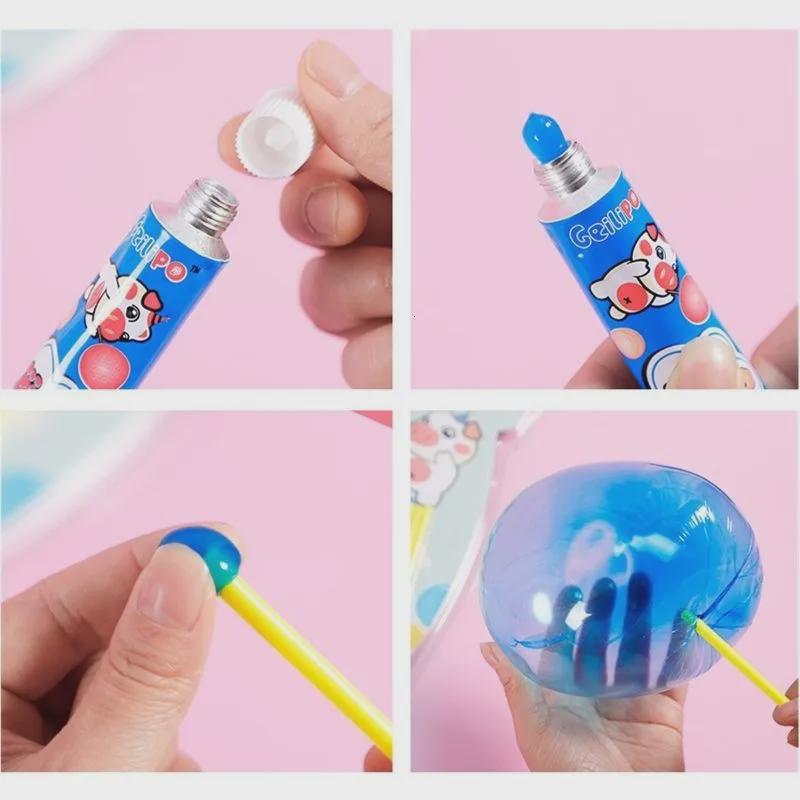
Plastic balloon kits included a straw and a tube of semi-liquid plastic. Children would squeeze the goo onto the straw and blow into it to inflate the balloon. However, the chemical mixture released strong fumes that were dangerous when inhaled. Prolonged exposure could cause dizziness, nausea, or long-term lung damage. In some cases, children tried to inhale the balloons themselves, which intensified exposure. These kits were eventually banned, and similar products today use latex or silicone with non-toxic formulas.
Firecracker Cap Guns
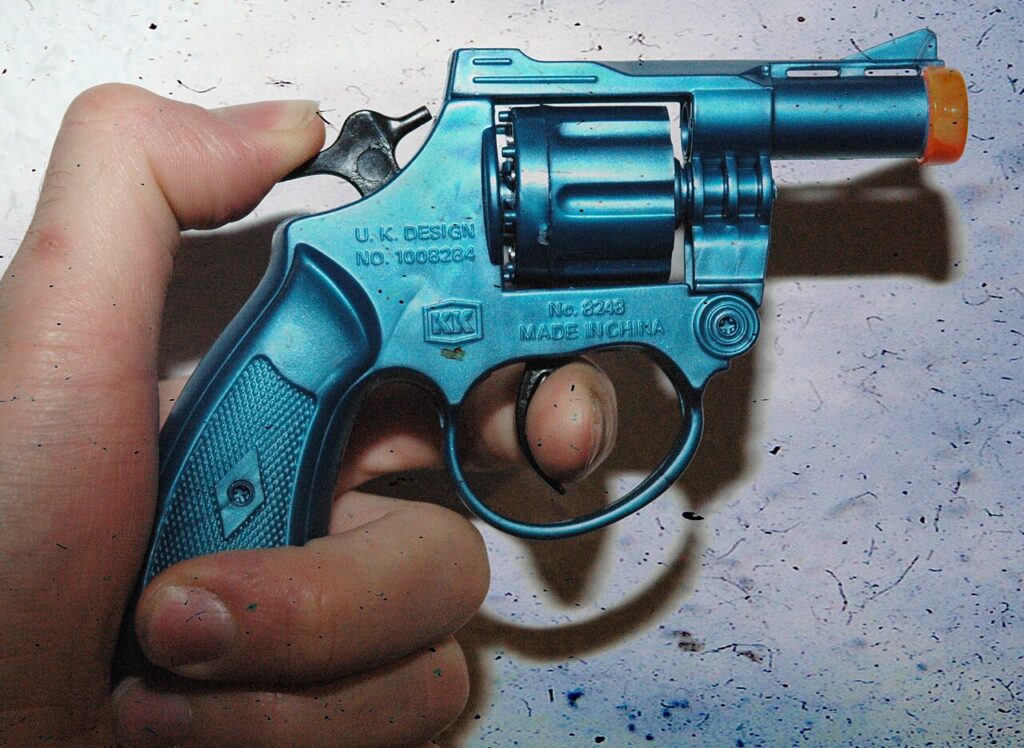
Cap guns used to simulate real gunshots using small paper or plastic caps filled with explosive powder. When struck, the caps created a loud bang, a puff of smoke, and sometimes sparks. These loud noises could damage hearing, and burns from exploding caps were common. Some caps could also be lit manually, creating a fire hazard. Today, toy guns that make sounds do so electronically, using recorded effects rather than real explosions. Caps with explosive chemicals are heavily regulated or banned entirely.
Miniature Metal Toys with Sharp Edges
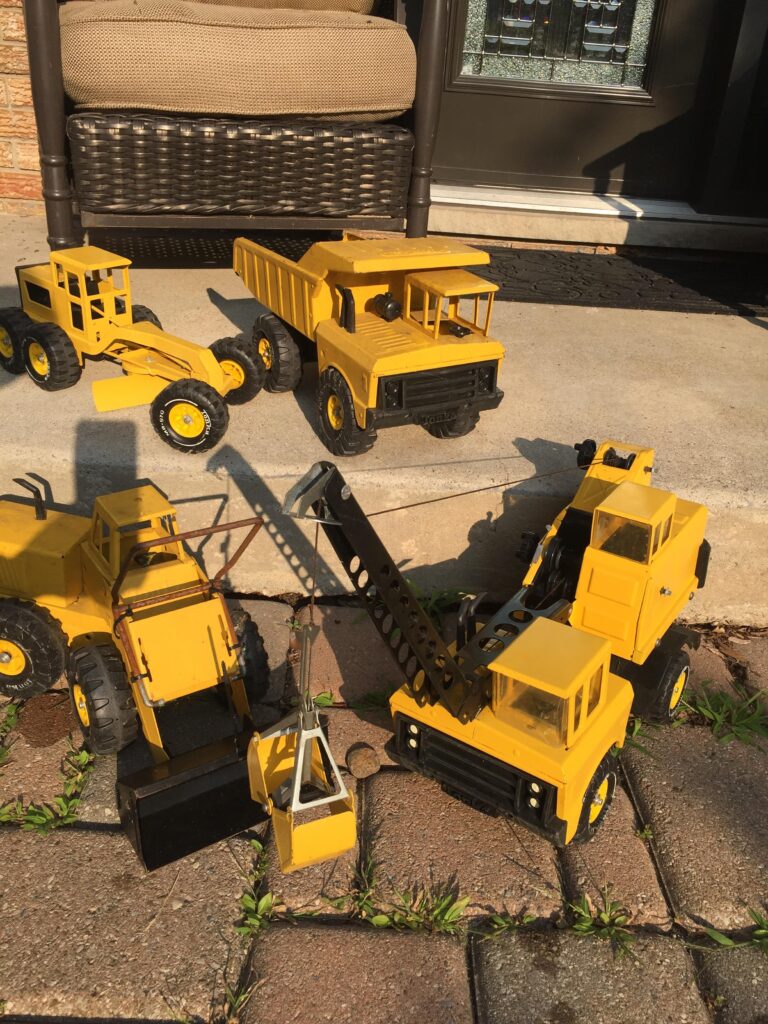
Before the shift to plastic, many toys were made from stamped metal sheets. These included toy cars, soldiers, and play kitchens. The edges were often unfinished and sharp enough to cut skin. As children played, they risked scratches, punctures, and lacerations. In addition, the painted surfaces were often coated in toxic materials. Toy safety standards now require that all sharp edges be rounded, sealed, or covered. Plastic has largely replaced metal for children’s toys due to its safer handling and easier molding.
Ride-On Toys Without Brakes

Early ride-on toys, including tricycles and pedal cars, frequently lacked braking systems. Children would ride downhill or into streets with no way to slow down or stop safely. This resulted in collisions, falls, and traffic accidents. Many had poor stability and could tip over easily. Braking systems, speed limiters, and enhanced stability are now required in most child ride-on products. New models are tested for slope control and balance, ensuring safer use both indoors and outdoors.
Public Awareness Over The Decades

These once-popular toys offer a snapshot of how different the world of childhood entertainment used to be. From toys with toxic chemicals to sharp edges and choking risks, many of them reflect a time when fun came before safety. The shift in regulations and public awareness over the last few decades has helped remove many of these items from circulation. Manufacturers now face intense scrutiny, and toys must meet rigorous standards before they ever reach store shelves. As the toy industry continues to evolve, these examples serve as reminders of how far we have come. Popular toys of the past may hold sentimental value, but safety and responsibility now define what makes a toy suitable for modern play.
Read More: 13 Childhood Toys That Could Make You Rich Today
Disclaimer: This article was created with AI assistance and edited by a human for accuracy and clarity.
